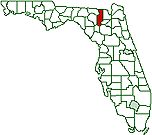South FL Action Plan Takes Aim on Climate Change
Posted January 23, 2015 07:29 am

Flooding from heavy downpour, Miami Beach
MIAMI, FL – With more than 1,300 miles of low-lying coastline, Florida sticks out as one of the world's most vulnerable places to climate change and the sea-level rise that's a consequence of rising temperatures. According to a United Nations report last year, southeast Florida has the most to lose because of high population density.
This week, leaders from Miami-Dade, the state's most populous county, presented a Climate Change Action Plan aimed at preparing for the worst.
 "Southeast
Florida taking these measures that are concrete action
steps to become resilient, I think, is really a turning
point," said Miami-Dade Clerk of Court Harvey Ruvin, who
chairs the county's Climate Change Taskforce. "I think
the rest of the country should really look to southeast
Florida as a proving ground, and the solutions that we
develop can be applied elsewhere."
"Southeast
Florida taking these measures that are concrete action
steps to become resilient, I think, is really a turning
point," said Miami-Dade Clerk of Court Harvey Ruvin, who
chairs the county's Climate Change Taskforce. "I think
the rest of the country should really look to southeast
Florida as a proving ground, and the solutions that we
develop can be applied elsewhere."
The plan's recommendations are based on the U.S.
government's National Climate Assessment, projecting an
ocean-level rise of two feet by 2060 and more than six
feet by the end of the century.
Within decades, even under the best-case scenarios, the
rise would strand Miami's nuclear power plant on an
island, leave the main airport runways underwater,
jeopardize the fresh-water supply and put an estimated
$6 trillion in assets at risk. However, Ruvin said it
isn't too late to make a difference.
"No, I don't think it's too little, too late," he said.
"I think the time probably would have been better if we
had started planning earlier. But now is now. We can't
push the clock back."
Ruvin, a former county commissioner, has been speaking
out on the dangers of sea-level rise for decades. He
said he only recently has been taken seriously.
"There are people that still are arguing that climate
change is not man-made," he said. "So, let's take that
argument off the table. It doesn't really matter much
what's causing sea-level rise. We know it's rising."
Ruvin said Miami isn't alone in the risks.
Three-quarters of Florida's nearly 20 million residents
live in coastal counties, which also could feel the
effects of sea-level rise in this century.
Photos/graphics and links added by the Observer | photo: Nat. Hurricane Center
This piece was reprinted by the Columbia County Observer with permission or license. It may not be reproduced in any form without permission or license from the source.
